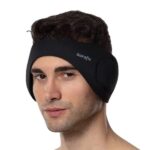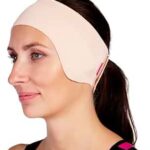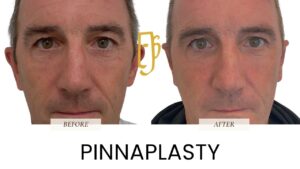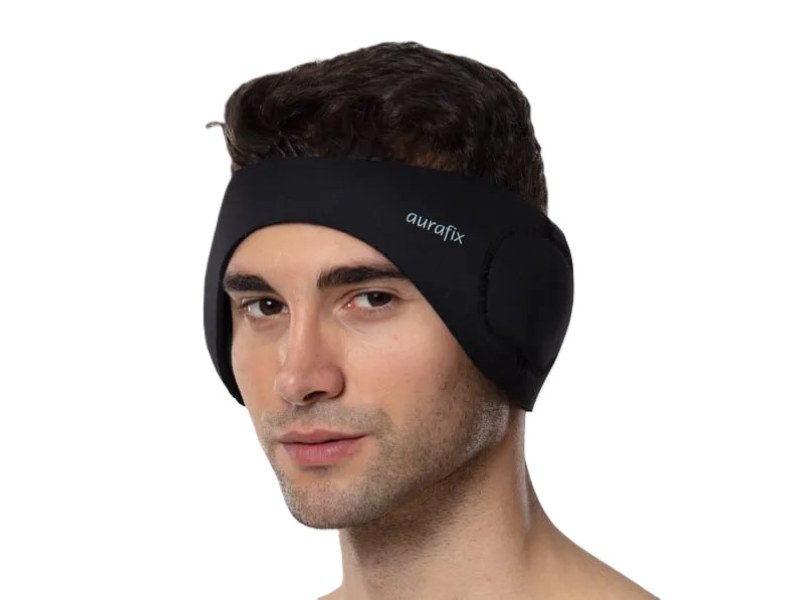
Quick
Jump
Menu
Pinnaplasty
Quick Summary
Transform Your Profile with Ear Reshaping
Refine your natural look with Dr. Ali Soueid — renowned plastic surgeon in London, Doha, Dubai, and Beirut. Trusted for precision, discretion, and world-class results.
Board Certified
Dr Ali Soueid is a UK Certified & Trained Plastic Surgeon
Our Standards
We only use the best materials on the market
Our Outcomes
We use evidence based practices to improve outcomes.
What is Pinnaplasty (Otoplasty)
Pinnaplasty, also known as otoplasty or ear pinning surgery, is a cosmetic procedure designed to correct prominent or protruding ears. It involves reshaping or repositioning the ear cartilage to create a more balanced, natural appearance that complements the facial features.
This minimally invasive surgery is commonly performed on both children and adults who feel self-conscious about the size or position of their ears. Pinnaplasty can also correct ear asymmetry or deformities resulting from injury or congenital conditions.
Key Benefits of Pinnaplasty:
Permanent correction of protruding or misshapen ears
Boost in self-confidence and self-image
Minimal scarring with discreet incisions behind the ears
Short recovery time and long-lasting results
Why Choose Dr. Ali Soueid for Pinnaplasty?
Dr. Ali Soueid is a top-ranked consultant plastic surgeon with an international reputation for excellence. Practicing in London, Doha, Dubai, and Beirut, he combines advanced surgical techniques with an artistic eye for facial harmony, delivering consistently natural and refined results.
Whether you’re looking for ear pinning surgery for yourself or your child, Dr. Soueid offers personalised care, state-of-the-art facilities, and the assurance of being treated by one of the region’s most trusted specialists.
Types of
Ear Reshaping Surgery
Adults and Children with Prominent or Asymmetrical Ears
Ear reshaping surgery is commonly performed on individuals with ears that stick out noticeably or are uneven. Whether you're an adult seeking a more balanced look or a parent considering treatment for a child, pinnaplasty offers a permanent, natural-looking solution.
Healthy Individuals with Realistic Expectations
Good candidates are generally in good physical health, free from ongoing ear infections or conditions that may affect healing. It’s also important to have a clear understanding of the procedure and realistic expectations about the results.
Children Aged 5+ with Fully Developed Ears
Pinnaplasty can be safely performed on children as young as five, once the ears have reached near full development. Early treatment can help prevent teasing or self-esteem issues, making it a valuable option for young patients and their families.
Who is a good candidate?
Before undergoing liposuction, a thorough consultation is carried out. Here’s what we evaluate:
Ear shape & size
Medical History
Lifestyle Factors
Expectations
What are the
Benefits of Pinnaplasty
Natural, Long-Lasting Results
The procedure offers subtle reshaping with minimal scarring, providing permanent results that look natural and age harmoniously over time.
Safe and Quick Recovery
Otoplasty is a low-risk surgery with a short recovery period, allowing most patients to return to daily activities quickly.
Boost in Confidence
Pinnaplasty helps individuals feel more comfortable with their appearance by correcting prominent ears and improving facial balance.
Steps Towards Achieving Your Goals
In Three Easy Steps
1. Consultation
A Consultation helps you give your desires to us and helps us take a thorough history, do an examination and order investigations.
2. Procedure
The day of the procedure is a big day for the patient and we take every measure to make sure your are comfortable and safe.
3. Recovery
We will support in this essential part of your journey to make it as smooth as possible.
Preparation & Aftercare
Follow these instruction to prepare for your procedure and to have a smooth post-operative recovery.
Pre-Op
Preparing properly for pinnaplasty (ear reshaping surgery) is essential for a smooth procedure and recovery. During your consultation with Dr. Ali Soueid, you will discuss your medical history, goals, and receive detailed pre-op instructions. It’s recommended to arrange time off work or school—typically 5 to 7 days—for initial recovery. Pre-operative photos may be taken to document your results. Be sure to arrange transport, as you won’t be able to drive yourself home after surgery.
What to Avoid
To reduce the risk of complications, it’s important to avoid certain medications, habits, and activities before your surgery. Refrain from smoking or vaping for at least two weeks before and after the procedure, as nicotine can delay healing and increase the risk of infection. Avoid blood-thinning medications such as aspirin, ibuprofen, and supplements like vitamin E or fish oil, unless otherwise instructed. Alcohol should be avoided for at least 48 hours before surgery, and you should not wear makeup, skincare products, or earrings on the day of your procedure. Additionally, stay out of the sun to prevent irritation of the skin around the ears.
Post-Op
After pinnaplasty, proper aftercare is key to ensuring optimal healing and results. You’ll be advised to wear a supportive headband, especially at night, for 1 to 2 weeks to maintain the new ear position. Keep the surgical area clean and dry, and sleep with your head elevated to minimize swelling. Avoid touching, pulling, or folding your ears while they heal, and steer clear of strenuous activities or contact sports for at least 4 to 6 weeks. Attend all scheduled follow-up appointments with Dr. Soueid to monitor your progress. If you experience any unusual symptoms such as severe pain, redness, or discharge, contact the clinic promptly.
Specialised Ear Procedures
Cup Ear
Cup ear deformity involves an excessively curved and tight upper helical rim. Surgery focuses on reshaping or scoring the cartilage to flatten and relax this area. improving appearance and often symmetry with the other ear.
Ear Reduction
Ear reduction surgery corrects large or hypertrophic ears by removing excess cartilage and skin to reshape the ear into a smaller form. We carefully sculpts the cartilage and close incisions to preserve ear function and aesthetics, enhancing facial harmony.
Earlobe Reduction
Earlobe reduction surgery addresses oversized or sagging earlobes by excising excess skin and soft tissue. Techniques often include wedge or elliptical resections, followed by closure to maintain a smooth, natural contour. This surgery improves ear proportion.
Ear Reconstruction
Ear reconstruction is a complex procedure used to rebuild ears lost or deformed due to trauma, cancer, or congenital anomalies such as microtia. It often involves harvesting costal cartilage (from the ribs) to create a new ear framework, which is then covered with local skin flaps or tissue expansion techniques to recreate a natural-looking ear.
Pinnaplasty
Pinnaplasty is a surgical procedure that reshapes the auricular cartilage to correct prominent or protruding ears. We use techniques such as cartilage scoring, suturing, or excision to reposition the ears closer to the head. Incisions are typically made behind the ear, minimizing visible scars. This procedure enhances facial symmetry and provides a natural, lasting result.
Stretch/Split Earlobes
Repairing stretched or split earlobes involves removing the damaged tissue and carefully suturing the skin and soft tissue layers to restore the earlobe’s natural shape and strength. The procedure can close large holes or tears caused by heavy earrings, trauma, or gauging, allowing patients to safely wear earrings again once fully healed.
What to expect
During Your Ear Reshaping Procedure
Pinnaplasty usually takes about 1 to 2 hours and can be done under local anaesthesia (where only your ears are numbed) or general anaesthesia (where you are asleep), depending on your needs and comfort. During the surgery, Dr. Ali Soueid will make small, carefully hidden cuts behind your ears to gently reshape the cartilage—the firm but flexible tissue that gives your ears their shape. This reshaping helps your ears sit closer to your head for a more balanced look.
After surgery, your ears will be wrapped in a soft bandage or headband to protect them and keep them in the right position as they heal. You might notice some swelling, bruising, or mild discomfort for a few days. This is normal, and pain medicine will be provided to keep you comfortable.
Most patients can return to work, school, or normal daily activities within about a week. However, it’s important to avoid heavy exercise, contact sports, or anything that might bend or damage your ears for 4 to 6 weeks to allow proper healing.
As the swelling goes down over a few weeks, your new ear shape will become clearer—looking natural and improving your overall facial harmony. Dr. Soueid will schedule follow-up visits to make sure your ears are healing well and to answer any questions.
Our Values
Aesthetics You Trust
Trust
Aesthetics You Trust is our motto. We will treat you with respect always and provide you with the best care we can.
Do No Harm
The first rule of medical ethics is to never knowingly do something to a patient that could harm them.
Evidence Based
We only offer treatments that are backed by evidence and based on our experience. We do not follow trends.
Be Your Best
We continuously educate ourselves, attend conferences and courses to stay up to date and use the best products.
FAQ
What is pinnaplasty, and who is a good candidate?
Pinnaplasty, or otoplasty, is ear reshaping surgery designed to correct prominent or protruding ears. Good candidates are healthy individuals with fully developed ears who are unhappy with their ear shape or position.
Are ear surgeries painful?
Ear surgeries are usually done under anaesthesia, so patients don’t feel pain during the procedure. Post-operative discomfort is manageable with prescribed pain medication and generally decreases within days.
How long does ear surgery take, and what types of anaesthesia are used?
Most ear surgeries last 1 to 2 hours. They can be performed under local anaesthesia with sedation or general anaesthesia, depending on the complexity and patient preference.
When can I return to normal activities after ear surgery?
Most patients return to work or school within a week but should avoid contact sports or heavy exercise for 4 to 6 weeks to protect the ears during healing.
How do I choose the right surgeon for ear surgery?
Look for a board-certified plastic surgeon with extensive experience in ear procedures. Consultations should include a detailed discussion of your goals, procedure options, and expected outcomes.
Can ear surgery correct congenital ear deformities like lop ear or cupped ear?
Yes, ear surgery can effectively correct common congenital deformities such as lop ear, cupped ear, and Stahl’s ear, improving both appearance and symmetry.
Is ear surgery permanent, and will the results last?
Yes, ear surgery results are generally permanent. Once the cartilage is reshaped and healed, the new ear position and shape typically remain stable for life.
What types of ear reshaping surgeries are available?
Common procedures include pinnaplasty (ear pinning), ear reduction for large ears, earlobe reduction to correct enlarged lobes, repair of stretched or torn earlobes, and complex ear reconstruction for congenital deformities or trauma.
How is ear reduction surgery performed?
Ear reduction involves removing excess cartilage and skin to resize large ears while preserving natural contours. The surgery is customized based on the patient’s ear shape and size.
Can stretched or torn earlobes be repaired?
Yes, stretched or torn earlobes can be repaired through minor surgical procedures that reshape and restore the natural earlobe appearance.
What is involved in ear reconstruction surgery?
Ear reconstruction addresses missing, damaged, or underdeveloped ears due to birth defects or injury. Techniques may include cartilage grafts, skin flaps, and sometimes prosthetic implants to rebuild the ear.
What should I expect during recovery from ear surgery?
Most ear surgeries involve mild swelling, bruising, and discomfort. Patients typically wear a protective headband and should avoid strenuous activity for several weeks to ensure proper healing.
Are there any risks or complications associated with ear surgery?
As with any surgery, risks include infection, bleeding, scarring, asymmetry, or changes in skin sensation. Choosing an experienced surgeon and following post-op care reduces these risks.
Can stretched earlobes be resized to wear earrings again?
Yes, earlobe repair surgery can restore stretched or torn lobes, allowing patients to safely wear earrings again after full healing.






